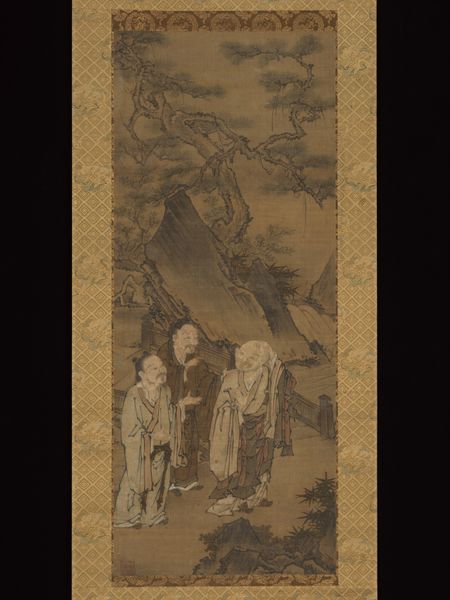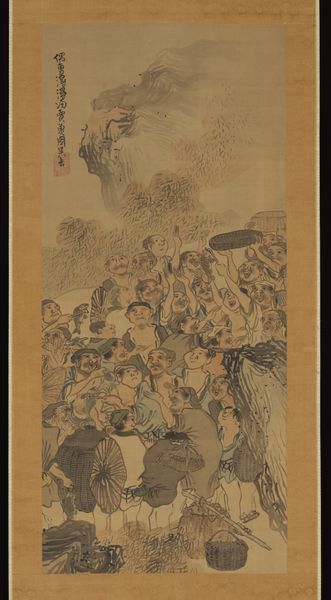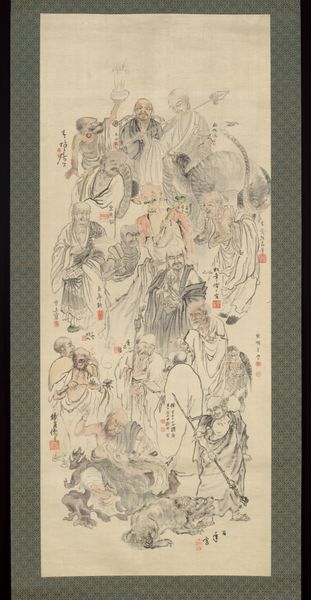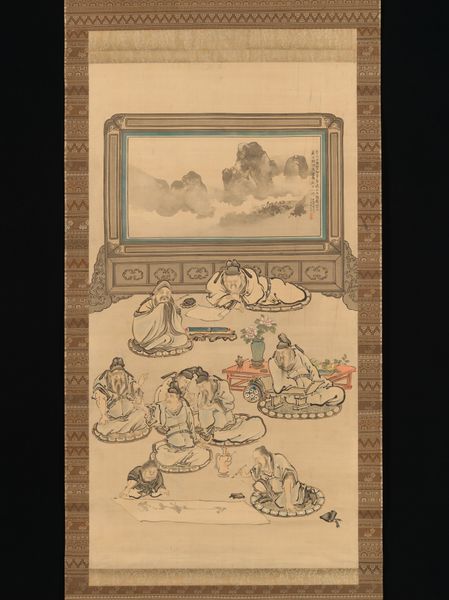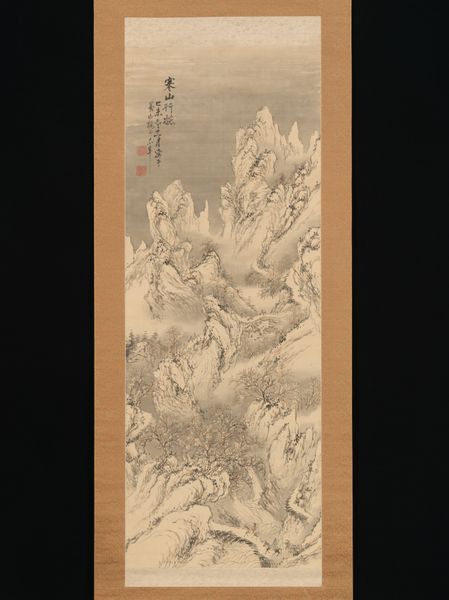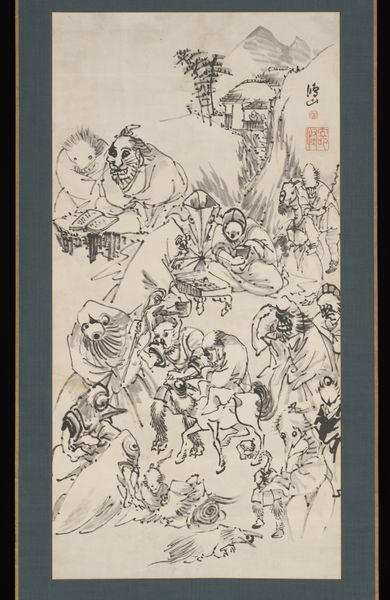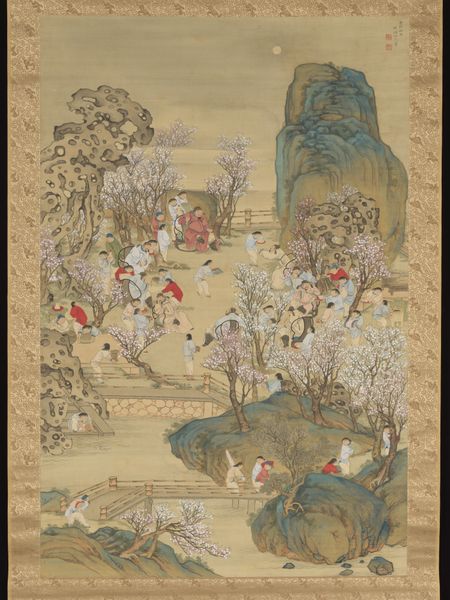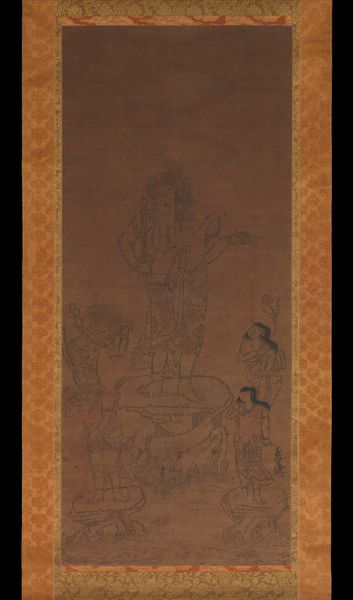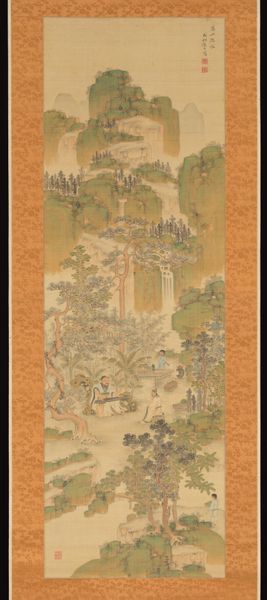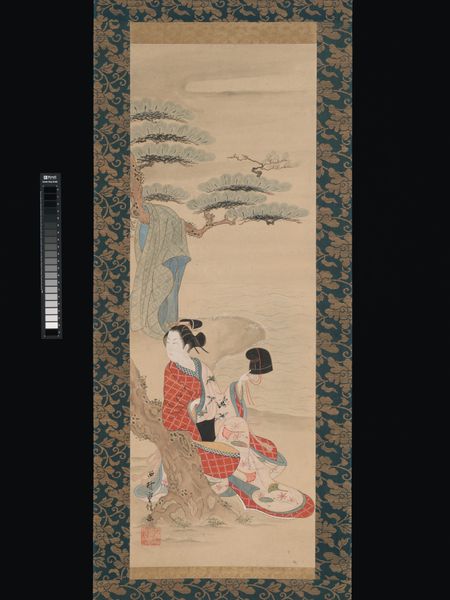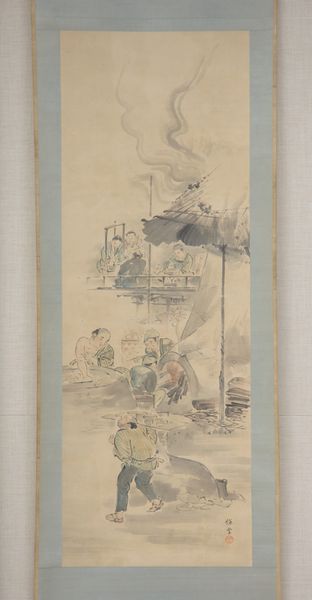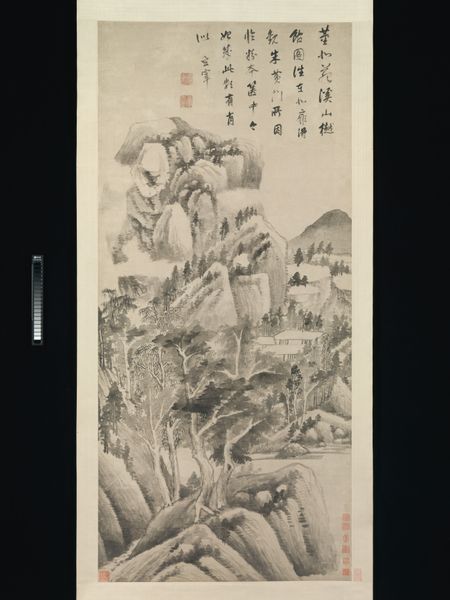
Drinking Festival of the Eight Immortals of the Wine Cup 1767 - 1799
0:00
0:00
painting, print, ink
#
painting
# print
#
asian-art
#
ukiyo-e
#
ink
#
genre-painting
Dimensions: Image: 51 5/8 × 23 11/16 in. (131.1 × 60.1 cm) Overall with mounting: 88 3/4 × 29 11/16 in. (225.5 × 75.4 cm) Overall with knobs: 88 3/4 × 32 1/16 in. (225.5 × 81.5 cm)
Copyright: Public Domain
Curator: Looking at this dynamic ink and color hanging scroll painting, it is attributed to Nagasawa Rosetsu, titled "Drinking Festival of the Eight Immortals of the Wine Cup," sometime between 1767 and 1799. The work invites contemplation through a lens that appreciates the revelry it depicts while observing historical class dynamics. What strikes you upon first seeing it? Editor: Honestly, chaos! It feels crowded, a swirling mass of faces and bodies all packed together. There's a festive energy for sure, but almost overwhelming. You get the impression of pure excess, perhaps not without societal implications of overindulgence. Curator: Yes! Excess is absolutely key. Observe how Rosetsu represents these legendary figures, elevating them beyond mere mortals and imbuing them with this symbolic power through their ecstatic abandonment. Do the Immortal figures act in service of cultural memory by mirroring archetypal behavior during festivities? Editor: It does make you consider who is present and who is absent. It highlights privilege by illustrating who has the luxury to engage in these activities. What socioeconomic and gendered norms shaped this narrative of leisure, excluding those deemed unworthy or unable? Curator: Absolutely. The act of drinking together has, for millennia, functioned as a potent symbol for solidifying allegiances and cultural bonds. The artist here employs a visual shorthand. The figures aren’t simply drunk but experiencing something… transcendent through alcohol. It becomes a statement about cultural values—where excess embodies connection to both cultural values and class privileges. Editor: I think it brings us back to the idea of excess, and who it truly benefits, particularly within such a contained space as the scroll allows. In moments of what feels like collective transcendence, perhaps there’s something quite isolating happening. How do these immortals use these images of their 'ascension', when so many are excluded by that access in this genre painting? Curator: It does prompt reflection on the role these representations play. The choice to represent them within the frame is, perhaps, a visual embodiment of that paradox. Through Rosetsu’s rendering of this boisterous scene, we find both a celebration of an elevated form and a question of how such experiences exclude or diminish others. Editor: Well, it's a complex image to sit with; its levity hides a lot about power. Curator: Yes. The artwork allows us to contemplate not just a scene but the very notion of immortal experience and its reverberations in our collective psyche.
Comments
No comments
Be the first to comment and join the conversation on the ultimate creative platform.
